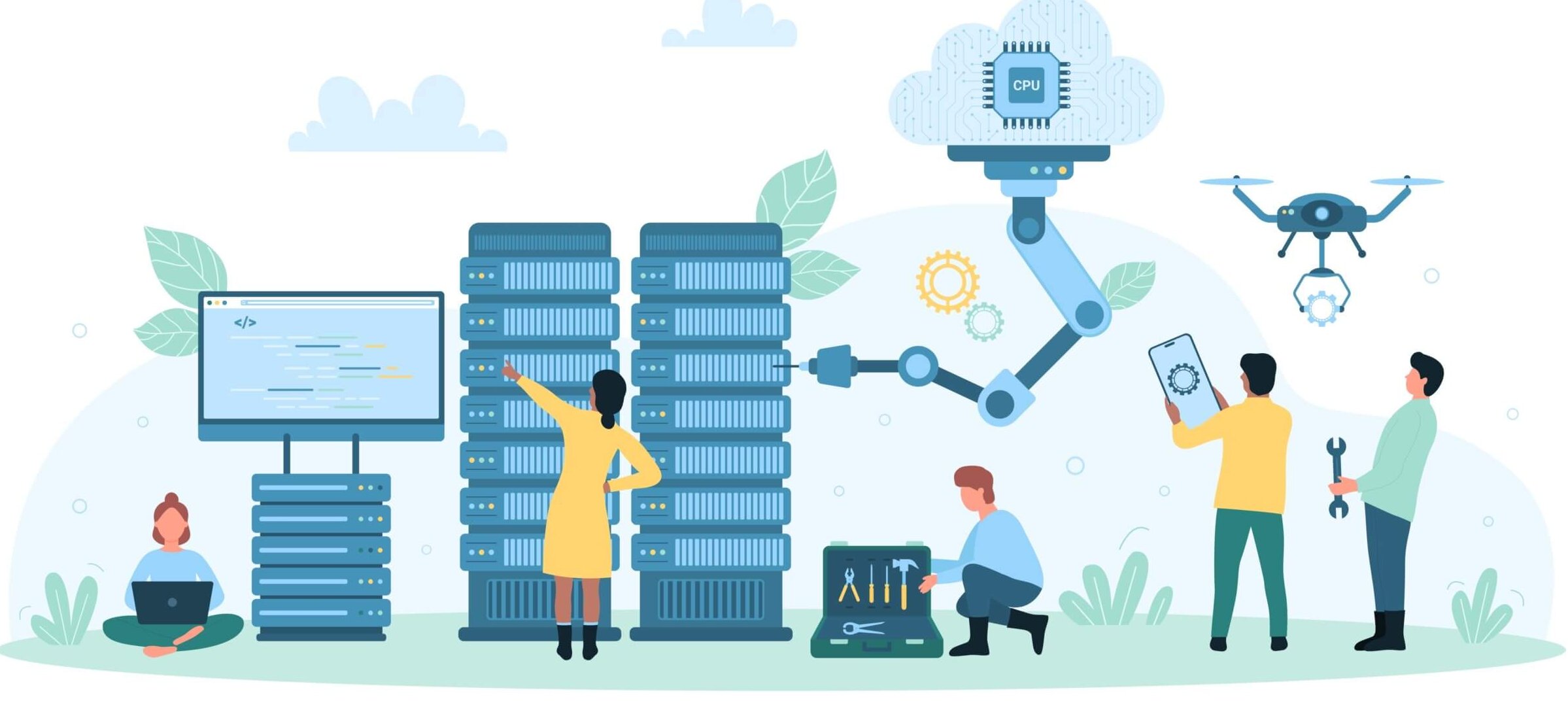The Cloud Is a No-Brainer…
Most companies by now have a “to the cloud” initiative that’s at one stage or another of maturity. It’s a great way to make better use of all your resources—people, time, and money. And it gives you more flexibility. You don’t have to size your entire application architecture for important but short-lived peaks, such as Black Friday for retailers or year-end ERP closing for large manufacturers, to name just a couple examples. And it’s not just these known seasonal spikes. The death of a major pop star, for example, can trigger an unplanned surge in downloads of their entire music catalogue. Or a new digital product launch could be a runaway success, far exceeding your expectations. The cloud allows you to add application and web servers as needed to take care of extra demand, so you can scale quickly. This means you don’t need to pay for and manage dedicated, on-prem resources that are mostly underutilized just so you can support shorter bursts of planned or unplanned activity.
…Except When It’s Not
So why not just put everything in the cloud? A new application is no problem; you can usually develop it to be cloud-native, though there are still a few exceptions. But most companies have lots—hundreds or even thousands—of existing applications in their data centers, and they don’t have the luxury of starting over from scratch. And while some of those existing applications are great candidates for migrating to the cloud, others are not. The good news is that the cloud isn’t an all-or-nothing proposition. Some applications can be migrated wholesale. A few should just be kept as is. But for many, a hybrid approach—moving some but not all application components to the cloud—is appropriate. With hybrid deployment, you can benefit from the advantages of the cloud, including maintaining your uptime SLAs, while avoiding issues that could end up costing you more time, money, and effort than you bargained for. Here are five common examples where hybrid cloud will give you the best of both worlds.
1. You need very high transaction speeds in your back-end data layer.
The challenge: Moving an entire application to the cloud can affect transaction speed, so if that speed is critical, you’ll need to put in some extra effort. There are solutions, such as NetApp, to put high-speed, enterprise-class storage into AWS and Azure, but that requires you to re-architect and re-write your application for “all-in-cloud” operation. If it’s mission-critical, that’s not a step that’s taken lightly, or without large project expense and time.
The hybrid solution: In this case, you’ll want to keep your data layer on premises, but move the other application layers to the cloud to get the scalability and cost advantages for those components. You may need to do a little re-architecting, but it’s nowhere near the heavy lift that would be required to support your data speed requirements in the cloud.
2. You have massive—or massively growing—data volumes.
The challenge: When your data is measured in petabytes or exabytes, moving it from one place to another can take a very, very long time. That’s why Amazon created an exabyte-scale data transfer service, called the AWS Snowmobile, where they physically bring a shipping container full of hard drives to your data center, plug in a fiber optic line to siphon off up to 100 petabytes, then truck it over to an Amazon data center where it’s uploaded to S3 or Amazon Glacier. When there’s that much data, no matter how you got it in, it’s going to be difficult to move it. And if you need to access that data frequently, you could end up with ballooning data costs that are harder to manage and control.
The hybrid solution: Analysis-intensive applications that require significant compute power are better candidates to be fully moved into the cloud. But to protect your massive data sets from cloud “stickiness” and cost, consider keeping them on-prem. Even if you don’t have immense volumes today, if you have data sets that grow very quickly, you could be setting yourself up for big headaches in the future. Keep massive data sets on-premises—and add scalability with cloud resources for analysis or front-end tasks.
3. The back end is a mainframe.
The challenge: There’s a reason that mainframes are still alive and well. They are the back end to a lot of well-structured and reliable mission-critical applications. They work, they’re stable, and you can scale the back end—and that’s probably not something you want to mess with. Which is not to say that you have to keep the entire application on-prem.
The hybrid solution: You can build new in-the-cloud front ends for the application—like a new web interface or mobile application—and link back to the mainframe environment. This approach enables you to easily extend the usefulness of that very predictable and secure back end, while enabling new uses for the services that it provides.
4. There are privacy and compliance concerns.
The challenge: There’s a growing body of regulations that require you to control access to your data. GDPR and CCPA are currently in force, and other U.S. states are proposing new strict privacy legislation. There are also industry-specific regulations, such as HIPAA in healthcare and PCI DSS for credit card processing. When data is on-prem, the problems (and risks) of meeting these regulations are well understood, and compliance is fully under the enterprise’s control—and easily demonstrated to auditors. For cloud environments, security is a shared responsibility between the cloud provider and customer, with each required to fully understand and meet their part of the security and compliance responsibilities. Regulatory compliance is possible under this model, but may be beyond the comfortable risk profile for some organizations, and require mastery of new technology controls and skills.
The hybrid solution: If your data is subject to stringent controls and you want to meet privacy stances and compliance requirements without having to worry about managing new exposure points in the shared security environment of the cloud, you may want to keep that back-end data on-prem. With this hybrid approach, you only need to control the encryption of the data rather than re-work the entire set of security controls for the cloud environment.
5. You’re looking to scale your mission-critical application without breaking the budget.
The challenge: Demand continues to grow for the core applications that your organization depends on, resulting in a need for increased capacity. In traditional models, you’d add on-premises (or hosted) infrastructure to support the change and you’d size the additions to meet your 99.99% workload environments. This can be an expensive proposition, as your typical workloads may require only 25% to 50% of the maximum “spike” in demand you need to meet.
The hybrid solution: Move application components that can scale horizontally, such as web or application servers in a typical three-tier web application, to cloud environments, while keeping core components for data and transaction processing in their existing location on-premises. This gives your mission-critical application immediate “headroom” to scale using components that are only paid for when they are needed. The result is a more scalable application—without breaking the budget.
Get Better Outcomes with Hybrid Cloud Deployment
Very little in life is black and white, and the cloud is no exception. That’s why many organizations have evolved their “cloud-first” mandates to “cloud-smart” strategies. By adding hybrid to your cloud options, you can make better decisions for your applications—and ultimately your business.

James Bettencourt




